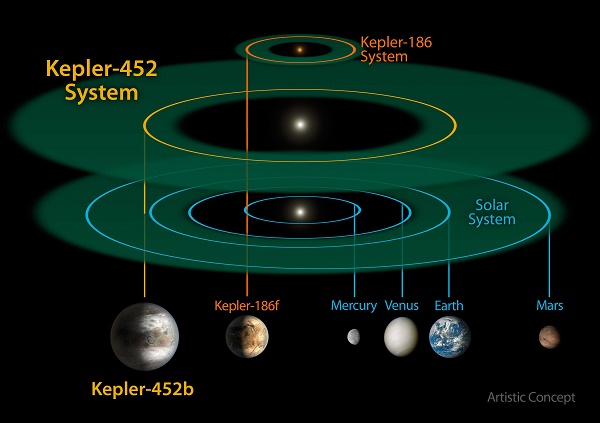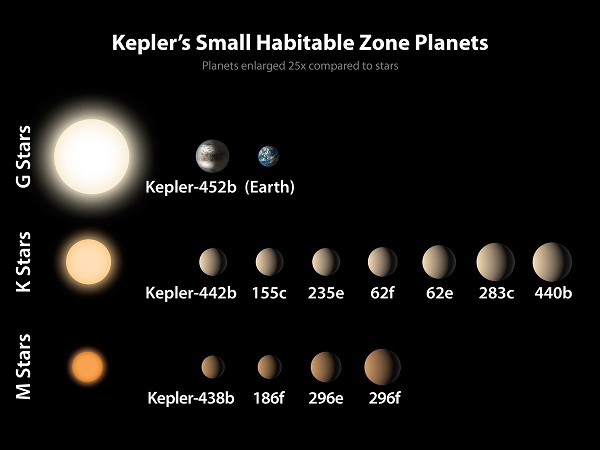NASA keeps hitting home runs. After finally reaching Pluto, NASA announced on Thursday that their planet-hunting Kepler Space Telescope has found a planet that is similar to earth more than any of the other discoveries.
As soon as the news broke out, people have dubbed several names for the new planet: Earth 2.0, Earth’s twin, Earth’s sibling among them. However, from the details that NASA has revealed about the planet the closest it comes to being is Earth’s cousin. Here are some of the things that you should know about the new found planet!
It is not Earth’s twin but ..
Kepler 452b is the first planet to be discovered that orbits a sun-like star in the habitable zone that could allow it to maintain liquid water on its surface, like the Earth. According to NASA, the planet is 60% bigger than Earth and is about 1,400 light-years from Earth in the constellation Cygnus. The Kepler Telescope was launched on March 6, 2009 to find planets similar to Earth orbiting other suns. Since its launch, it has discovered 12 similar planets but they are less than twice the size of the Earth from a total of 500 candidates, orbiting the habitable zones of their stars.
It belongs to the Kepler-452 system, that is roughly the same size as our solar system (see the figure below). Kepler 452b’s orbit size almost the same as the Earth, which puts it in the habitable zone. This similarity means several things: the planet gets the same amount of energy from its sun as the Earth gets from our Sun and sunlight there would be similar to ours. The duration of a year on Kepler 452b is 385 days only 20 days more than the Earth. It could possibly have an atmosphere, clouds, and volcanoes as well.
Despite these many similarities, Kepler 452b is perhaps a good analog for Earth, not its twin. However, this doesn’t mean there couldn’t be a twin out there.
“This exciting result brings us one step closer to finding an Earth 2.0,” John Grunsfeld, associate administrator of NASA’s science mission directorate, said in a press release.
It may turn out be nothing like the Earth
If you see the cover image for this article, you’ll see Earth on one side and slightly larger Kepler 452b on the other. Notice how similar their appearance is? Despite this, scientists feel that on further probation we may find out that it’s nothing like the Earth.
At this point, there are more questions regarding the new found planet than there are answers. Some scientists feel that its surface is rocky, which could mean that it is experiencing runaway greenhouse effect due to large amounts of radiation from its aging star. Some scientists say that it may not be rocky. The thing is that the Kepler 452b system is very far from the Earth and it may take us a very long time to find out what the planet actually looks like. There’s also huge likelihood we may never find out what it looks like.
We may find Earth’s twin someday
As I mentioned before NASA has found 12 planets that are very similar to the Earth. However, Kepler 425b orbits a star that is similar to our Sun; it belongs to the family of G Stars. Who knows in the coming years NASA may come up with a Telescope that could provide us with more in-depth information to help understand Earth-like planets. NASA’s James Webb Space Telescope, set to launch in 2018, should be able to hunt for alien worlds that could be like our Earth. The Giant Magellan Telescope, which is set to break ground in Chile later this year, should have the ability to peer into the atmospheres of exoplanets and understand their composition. NASA’s Transiting Exoplanet Survey Telescope will also have the ability to hunt for alien planets around relatively nearby stars.
So until Earth’s twin is discovered, Kepler 452b will keep scientists intrigued and possibly help in understanding Earth’s evolving environment.
Image Credits – NASA














